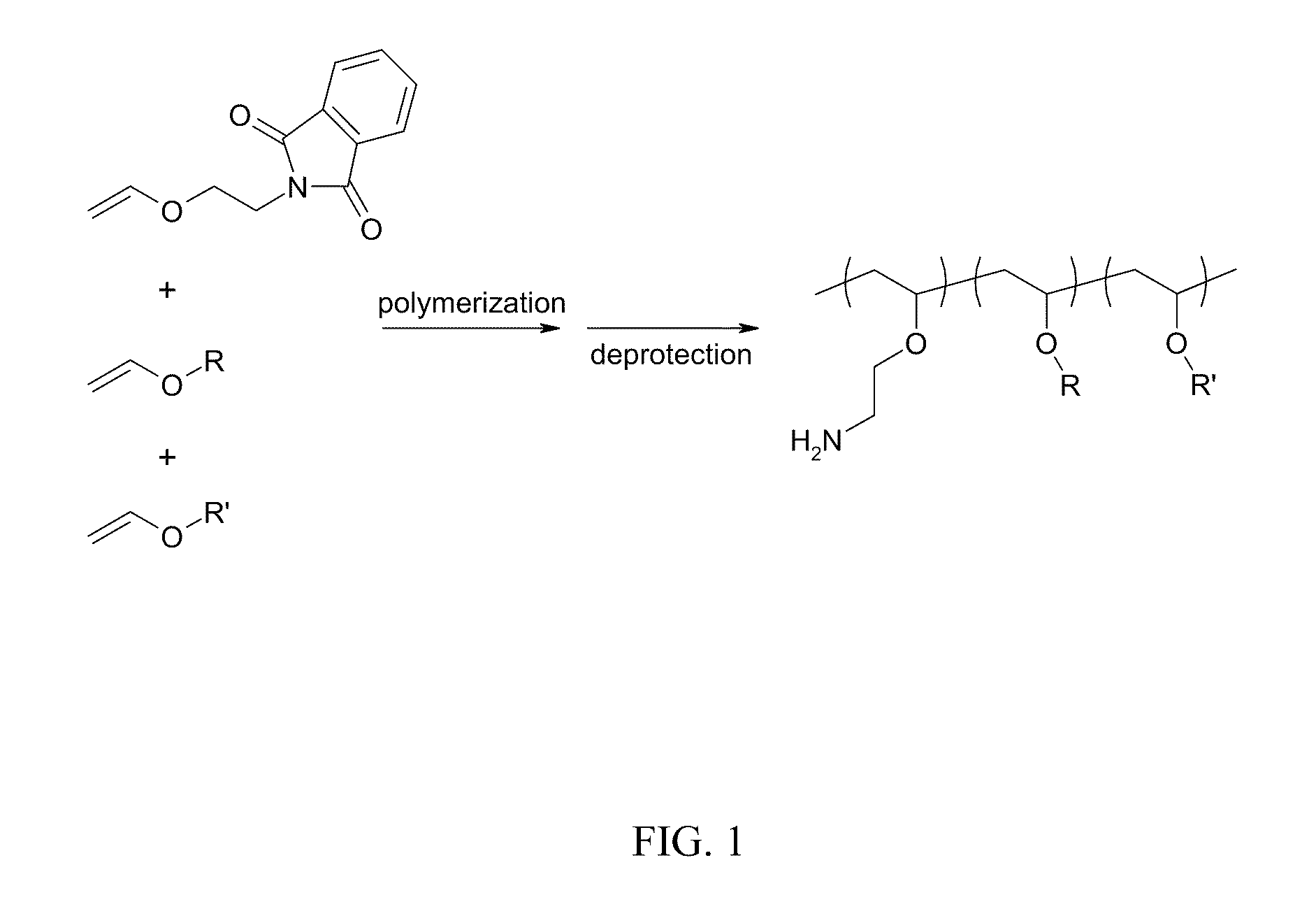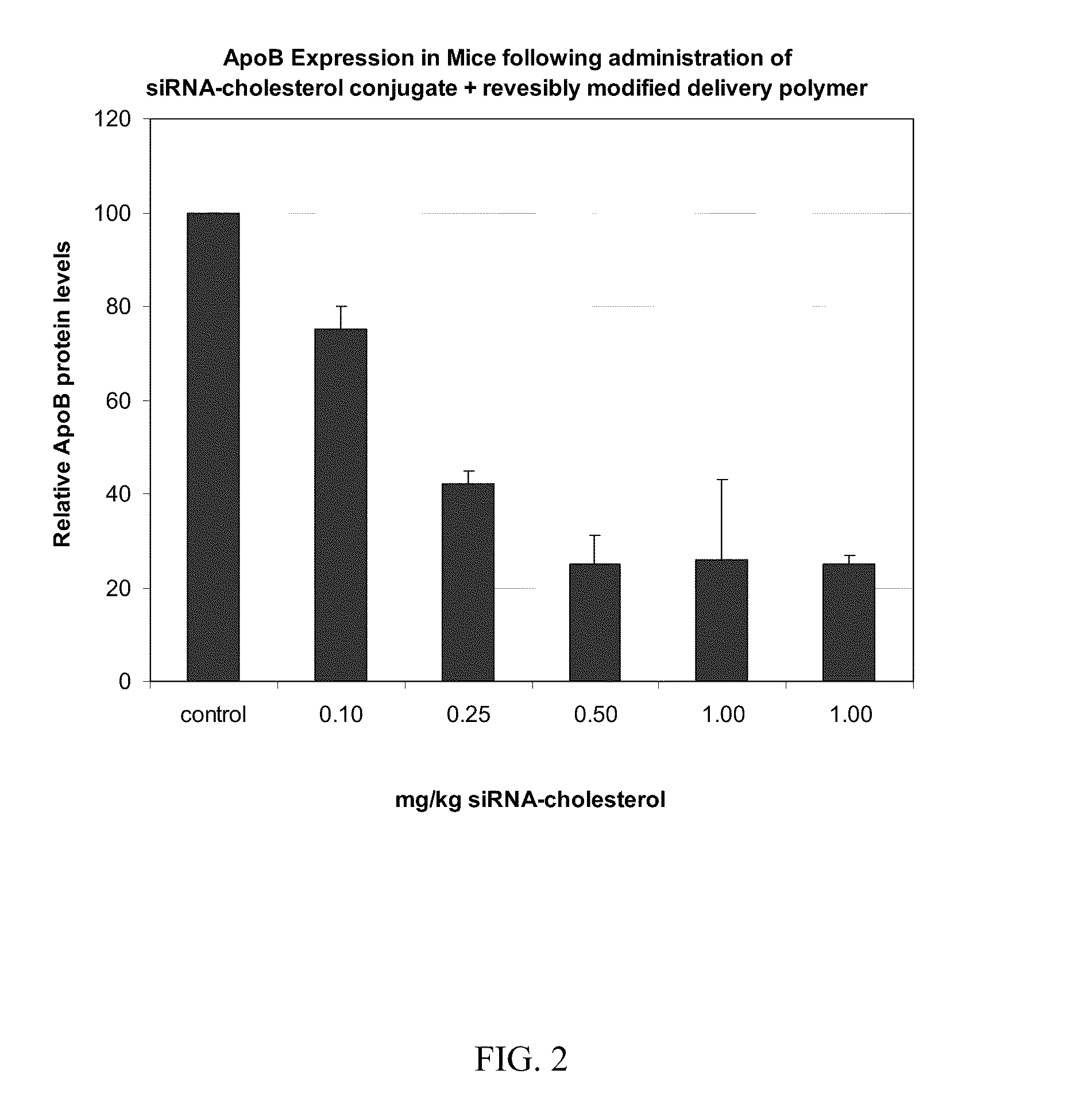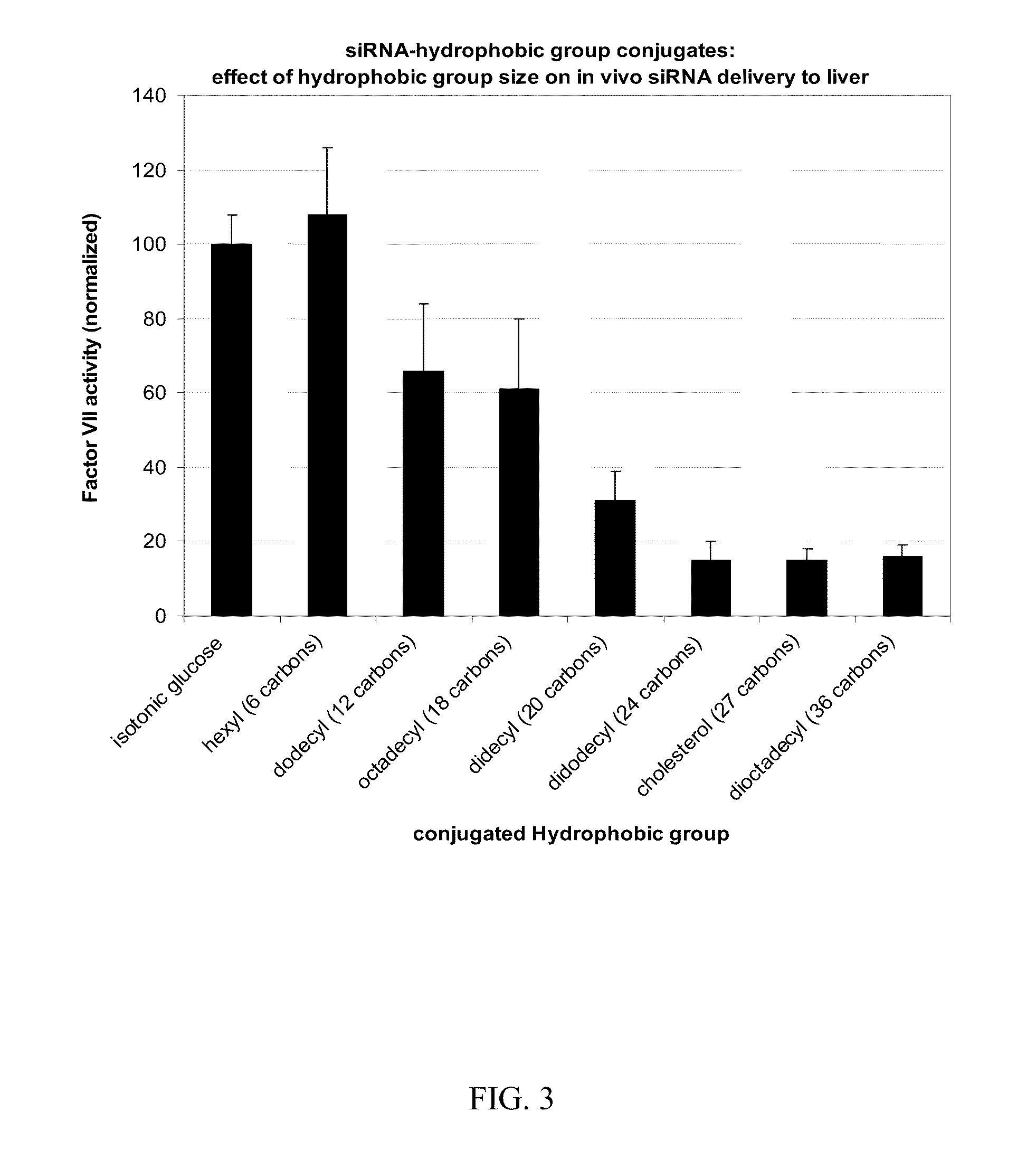Compositions for targeted delivery of siRNA
a technology of compositions and sirna, applied in the direction of drug compositions, peptide/protein ingredients, metabolism disorders, etc., can solve the problems of ineffective polynucleotide delivery using the same transfection reagents, complex delivery of polynucleotides, and large hydrophilic polymers used in antisense, rnai, etc., to inhibit endogenous gene expression, reduce the effect of rnai and reduce the effect of r
- Summary
- Abstract
- Description
- Claims
- Application Information
AI Technical Summary
Benefits of technology
Problems solved by technology
Method used
Image
Examples
example 1
Poly(Vinyl Ether) Random Copolymers
[0143]A. Vinyl ether monomers for incorporation of amine-containing monomers. 2-Vinyloxy Ethyl Phthalimide was prepared via reacting 2-chloroethyl vinyl ether (25 g, 0.24 mol; CAS #110-75-8) and potassium phthalimide (25 g, 0.135 mol; CAS #1074-82-4) in 100° C. N,N-Dimethylformamide (DMF, 75 ml) using tetra n-butyl ammonium bromide (0.5 g; CAS #1643-19-2) as the phase transfer catalyst. This solution was heated for 6 h and then crashed out in water and filtered. This solid was then recrystallized twice from methanol to give white crystals.
[0144]B. Synthesis of water-soluble, amphipathic, membrane active poly(vinyl ether) polyamine terpolymers. X mol % amine-protected vinylether (e.g., 2-Vinyloxy Ethyl Phthalimide) is added to an oven dried round bottom flask under a blanket of nitrogen in anhydrous dichloromethane. To this solution Y mol % lower hydrophobic group (e.g., propyl, butyl) vinylether and optionally Z mol % higher hydrophobic group (e.g....
example 2
Characterization of DW1360
[0178]A. Amphipathic analysis. 1,6-diphenyl-1,3,5-hexatriene (DPH, Invitrogen) fluorescence (λex=350 nm; λem=452 nm) is enhanced in a hydrophobic environment. This fluorophore was used to analyze the DW1360 polymer. 0.5 μM (final concentration) DPH was added to 10 μg DW1360 in 0.5 mL 50 mM HEPES buffer, pH 8.0. The solution was then tested for DPH accumulation in a hydrophobic environment by measuring fluorescence of DPH. Increased DPH fluorescence in the presence of the conjugates indicates the formation of a hydrophobic environment by the polymer.
[0179]B. Molecular Weight. Polymer Molecular Weights (mass) (MW) were determined on a Wyatt Dawn Heleos II run in conjunction with optilab rEX in batch mode. Polymers was brought up at varying concentrations in appropriate solvent and each was loaded onto the Wyatt system. Astra software then calculated changes in refractive index as a function of concentration (dn / dc) which was used in a Zimm plot to calculate M...
example 3
Masking Agents
[0183]A. Synthesis of 2-propionic-3-methylmaleic anhydride masking agent precursor (carboxydimethylmaleic anhydride or CDM).
[0184]
[0185]To a suspension of sodium hydride (0.58 g, 25 mmol) in 50 mL anhydrous tetrahydrofuran was added triethyl-2-phosphonopropionate (7.1 g, 30 mmol). After evolution of hydrogen gas had stopped, dimethyl-2-oxoglutarate (3.5 g, 20 mmol) in 10 mL anhydrous tetrahydrofuran was added and stirred for 30 min. 10 mL water was then added, and the tetrahydrofuran was removed by rotary evaporation. The resulting solid and water mixture was extracted with 3×50 mL ethyl ether. The ether extractions were combined, dried with magnesium sulfate, and concentrated to a light yellow oil. The oil was purified by silica gel chromatography elution with 2:1 ether:hexane to yield 4 g (82% yield) of pure triester. The 2-propionic-3-methylmaleic anhydride was then formed by dissolving of this triester into 50 mL of a 50 / 50 mixture of water and ethanol containing 4...
PUM
 Login to View More
Login to View More Abstract
Description
Claims
Application Information
 Login to View More
Login to View More - R&D
- Intellectual Property
- Life Sciences
- Materials
- Tech Scout
- Unparalleled Data Quality
- Higher Quality Content
- 60% Fewer Hallucinations
Browse by: Latest US Patents, China's latest patents, Technical Efficacy Thesaurus, Application Domain, Technology Topic, Popular Technical Reports.
© 2025 PatSnap. All rights reserved.Legal|Privacy policy|Modern Slavery Act Transparency Statement|Sitemap|About US| Contact US: help@patsnap.com



